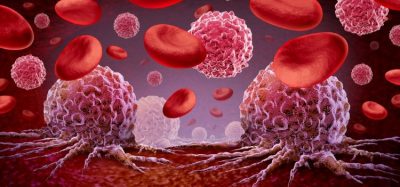Positive results in Duchenne muscular dystrophy (DMD) trial
Posted: 29 September 2020 | Hannah Balfour (European Pharmaceutical Review) | 2 comments
Interim trial results suggest vamorolone may offer a superior alternative to long-term treatment with high-dose glucocorticoids in young Duchenne muscular dystrophy (DMD) patients.


Steroid therapy is currently the only treatment that has been shown to slow the effects of Duchenne muscular dystrophy (DMD), an irreversible, progressive muscle disease that is caused by X chromosome mutation that results in a genetic inability to create dystrophin. Dystrophin is a protein that protects skeletal and heart muscle from injury caused by normal contraction and relaxation.
According to the interim results from a 24-month, multi-center, global DMD trial, conducted at Duke University Medical Center (Duke Health) and other institutions, vamorolone may retain or improve the effects of current steroid treatments (such as prednisone or deflazacort) while reducing health risks associated with long-term steroid use.
“This is potentially great news for these boys who are just beginning the steroid regimen that is our standard-of-care treatment,” said Dr Edward Smith, a neurologist, co-director of the Duke Children’s Neuromuscular Program and a clinical investigator in the trial. “One of our biggest concerns about high-dose steroid treatment in these patients is the effect on linear growth and bone development. So far, based on the interim results from this trial, we may be seeing a much less negative impact on bone health among patients using vamorolone.”
He added that the current high-dose steroid regimens are known to halt the development of growth plates in young patients and inhibits the lengthening of bones. Despite the side effects, steroid therapy has been shown to extend patients’ mobility and lives. DMD patients now frequently live into their 30s, but eventually experience heart and respiratory failure.
Smith said young patients typically present with some degree of delayed motor development and neurocognitive issues, doing “relatively well until age six” when the “muscle weakness becomes pronounced and eventually impacts their ability to stand and then their ability to walk.” Behavioral development may also be hampered.
Following completion of the six-month study, the 46 trial participants were given the option to transition to standard of care using prednisone or deflazacort or continue treatment with vamorolone through enrolment in a two-year long-term extension study. All participants opted to continue treatment with vamorolone.
“We saw statistically significant improvements in the outcome measures in this part of the overall trial in boys treated with the two highest doses of vamorolone for 18 months, with improvements in strength and function,” Smith said. “These improvements appear to be similar to what is seen on steroid-treated boys, based on data from DMD natural history studies. Additionally, vamorolone appears it may have a much better side effect profile than traditional glucocorticoids, even at the highest doses tested.”
“Although this particular trial was not placebo-controlled, I am encouraged by the safety and efficacy data and look forward to results from the larger placebo-controlled trial (VBP15-004) that is currently underway at Duke and other sites,” Smith concluded.
The findings were published in PLOS Medicine.
Related topics
Clinical Trials, Drug Development, Drug Safety, Therapeutics










My son is suffering from DMD so please give the treatment suggestions
Give the Suggestions treatment of DMD patients